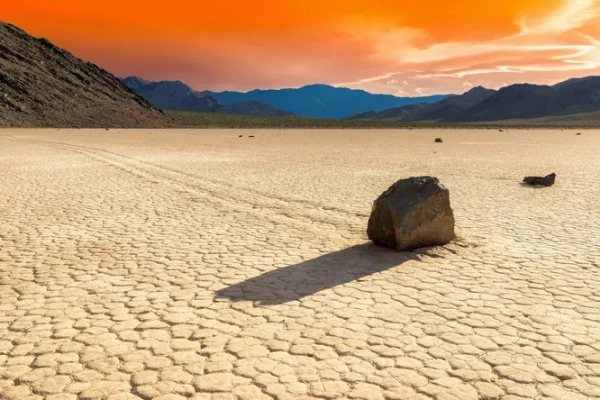
Death Valley National Park is a strange place by any measure. Not only is it one of the hottest and most lifeless places, but it also features the unusual phenomenon of moving stones. No one pushes them; they drift across the dried Racetrack Playa, leaving long trails behind.
The phenomenon of "sailing stones" began to be studied in the 1940s, and for over 70 years it remained a mystery for geologists, meteorologists, and other scientists. Experts proposed theories about magnetic fields, winds, and even the influence of supernatural forces, and only in the early 21st century did scientific explanations emerge for what happens in the hottest place on our planet.
The Experiment That Put an End to Speculation
As researchers discovered, the stones scattered across Racetrack Playa are composed of dolomite and syenite — the same materials that make up the surrounding mountains. They break off due to erosion and settle on the dried ground below, and then slowly, but noticeably, begin to move across the desert terrain.
Thus, the longest journey of a large "sailing" stone ever recorded was 450 meters.
The mystery of the moving stones remained unsolved for one simple reason — there were no suitable technologies. In the winter of 2014, scientist brothers Richard and James Norris placed 15 artificial stones equipped with GPS and slow-motion cameras on the lake.
It turned out that although this lake has long been considered dry, it does not always remain so. Water occasionally accumulates on its surface after rain or as a result of melting snow on the surrounding peaks. And when this occurs, if the temperature drops below zero (which happens here often, but only at night), a thin layer of ice can form on the bottom. Then, as the sun warms the air, the ice begins to crack and move under the influence of a light wind, dragging the boulders along with it.
The experiment showed that the stones move slowly — at a speed of 2 to 6 meters per minute. When the ice completely melts and the water evaporates, characteristic grooves remain on the lake bed — as if carefully drawn lines. They can last for years until they are destroyed by the next rain or dust storm.















Leave a comment